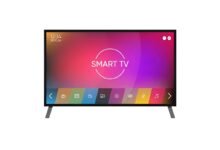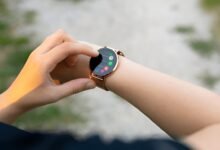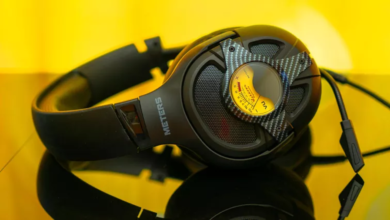Best Telescope Buying Guide 2020

A telescope is an excellent gift, especially during holidays. It can be portable to the universe and provide lifetime enjoyment. But there is no perfect telescope. That’s why you should choose a telescope that is based on your observing interests, lifestyle, and budget. A decent telescope costs more than $300. However, some superb choices are also available in the market under $250.
So, here is the buying guide for the best telescope. By going through this guide, you surely have an idea about telescopes and features to look before buying a telescope.
Read more: How Tech and Innovation have Transformed the Dental Industry
How do telescope works?
Early telescope focused light using pieces of curved clear glass. But most telescopes use curved mirrors to gather light from the sky. And the shape of the lens or mirror in a telescope concentrates light. And that is what you see when you look into the telescope.
Telescope Buying Guide: Choosing a telescope
With different styles of telescopes, many of you aren’t sure how to pick the best telescope for their individual needs.
But if you’re a beginner, then you must get a refractor or reflector telescope. For customers who want to avoid maintenance, then a refractor telescope is the best choice to consider. Because refractor and compound telescopes are great for observing birds, and similar earth objects. And for deep-sky viewing refractor is excellent.
Read more: Top 15 Uses of GPS Tracker in Day Life
Factors to consider while buying a telescope
If you’re in the market to buy a decent telescope, then you should first know that what its main features are rolling for. Here are the basic guidelines for the most important characteristics of any telescope.
Type:
There are two types of telescopes in the market. The refractors and reflectors. The refractors have as lens located at the front of the tube. This lens bends the light that passes through it. These telescopes are quite easy to maintain but can be expensive for a higher aperture.
The reflecting telescopes use mirrors instead of lenses which is located near the rear of the telescope tube. The mirror gets light and drops it on a single point to produce crystal clear images.
Aperture:
The aperture refers to the diameter of the light-gathering mirror or lens. It is usually expressed in millimeters. A decent telescope should have a minimum of 70-mm of aperture. The larger aperture of the telescope, the easier it is to see far away objects in the sky.
Focal length:
The focal length of the telescope refers to the distance between the telescope’s lens or mirror and the focus point. Where the light rays come together on a single point.
Mounts:
There are two types of mounts available in the market. The first one is the altazimuth mount. This is the simplest type of mount with vertical and horizontal motions. Most models of telescopes include low motion knobs for precise adjustment when you’re trying to track an object in the sky.
The second one is Equatorial mounts, these mounts are considered to be ideal for astrophotograhpy and observing objects in the sky for a long period of time. They can be aimed at any celestial object and can be easily guided manually using slow-motion controls.
Eyepiece:
The eye-piece is what you look through. It is placed near the focal point of the telescope to help you to magnify the images quickly and efficiently. Eye-pieces come in different range and size. Some telescopes come with few eyepieces to you multiple magnification options.
Weight:
Larger telescopes have more light gathering capability and are great for looking at deep-space objects. However, they’re heavier in weight as compared to other models of telescopes. This con makes less portable.
Note: if you’ll just setting it up at your home, then this won’t be an issue. But if you’re planning to use it away from your home or city, then due to its heavyweight, it can harder to carry around.
How to take care of your telescope?
One of the most important things for taking care of your telescope keeping it clean. Because dirt can get on the lenses or mirrors, which will scatter the light, and you’re not able to see crystal clear images. To solve this issue, there’re a few things you should know:
Always use the lens cap, when you’re not using the telescope. The eyepiece holder should be store in a case. In addition, don’t touch the lenses or mirror surfaces to prevent the oil on your skin from deteriorating the optical coatings.
Clean your telescopes and its accessories only when needed. Because cleaning could cause tiny scratches on the surface of the telescope. For cleaning, place your fingers over the eye-piece without touching the glass and suck the air up from your fingers.
Frequently Asked Questions About Best Telescope
What is the best telescope under $300?
- Celestron Astro Master Z70
- Orion StarBlast II
- Celestron 114LCM
- Ghyker Telescope
- Celestron 21030
Which type of telescope is best?
For customers who want to avoid maintenance, refractor telescopes are an excellent choice to consider. Because refractor and compound telescopes are perfect for observing birds, and similar earth objects.
How much good telescope costs?
A decent telescope price range starts from $200 to $1000. But if you are an amateur astronomer, then you should stay away from pricing options. However, if you’re willing to spend more than $500, then you can easily get a telescope with high capabilities.
Is it safe to look at the moon with a telescope?
The light reflected from the moon is intensively small as compared to the sun. So, there’s no chance of damaging your eyes by looking at the moon with a telescope. But the brightness of the full moon through reasonably powered telescopes can make your eyes feel dizzy.











